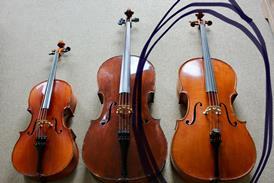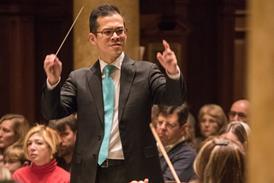Teacher Talk: your string teaching questions answered by our panel of experts

Do you believe in incentivising young children with sweets and stickers?
Acacia Strong, Albuquerque, US
Mimi Zweig: I like bribes because all good actions deserve a just reward. As students develop, the rewards are to perform beautifully in recitals, participate in competitions and play chamber music. For younger children, a bon-bon or sticker can justify their daily practice, the many repetitions of a specific passage, or fixing a physical motion. One of my former students told me that her mother promised her an ice cream after every lesson in which I told her to ‘Raise that violin!’ fewer than ten times! It must have worked because she is now a prominent member of the music community. (And how many of us teachers think of that nice glass of wine waiting for us after a long day in the studio?)
Bonnie Hampton: Praise and encouragement at any age is welcome. For the young student, fun stickers acknowledging their achievements can be positive. Playing beautifully is its own reward and needs to be the main goal of one’s work, but good efforts can certainly be appreciated.
How do you help young players who get very tired holding up the viola and let it droop by the end of a piece?
Antoine Stein, Paris, France
Bruno Giuranna: Help the player to notice the difference between the sound produced when they have a collapsed posture and the one made when they are in a correct, straight position. Let’s assume that the ergonomics of the instrument – the chin rest and shoulder rest (if there is one) – are correct. Check how much the spine bends forward and if there is a constitutional weakness in the back muscles. If necessary, suggest some exercises without the instrument. When the student has dropped the viola scroll to the lowest position, stop them and ask them not to move – to freeze. Remove the instrument and bow from their hands and start a normal conversation with them in that position. The student will realise how unnatural and wrong that bending-forward position is. Also, an unexpected photo can do the trick!
What do you recommend students do to avoid making tense facial expressions when playing?
Janet Smith, Gloucester, UK
Boris Kuschnir: There are many ways the teacher can help the student, depending on the amount of facial movement. One good way I have found is to convince the student that all the expression they seek can be made fully with the movement of the hands – especially the right hand – instead of using the facial muscles in exaggerated mime. And of course, their whole posture must be relaxed while playing. Another option is for them to practise playing and speaking at the same time in order to relax the muscles.
At what stage do you get bass students to take up chamber music and how do you encourage them? It seems a lot harder for them to get into it than it is for violinists, violists and cellists.
Jake Fiege, New York, US
Jeff Bradetich: The importance of chamber music in double bass players’ curriculum is just the same as for the other strings. It is, however, much more difficult to access. The reasons for this include: lack of knowledge of the existing repertoire on the part of both bass players and other string players; lack of desire on the part of other string players to play with the bass; the importance of learning the major chamber repertoire for the other strings thus excluding the bass; and lack of teacher, director and bass player initiative.
Bass players tend to focus on studying orchestral excerpts but rarely concentrate on how to perform with others in a small group setting. This adversely affects our ability to play in the orchestra and to develop as musicians.
It is never too early to start bass players learning to listen and play together with others, and reaping the benefits of all that chamber music has to offer. The responsibility, however, falls on the teacher, the orchestra director and the course directors to make sure this opportunity flourishes.
THE EXPERTS
Jeff Bradetich is professor of double bass at the University of North Texas College of Music and at the Cleveland Institute of Music
Boris Kuschnir is violin professor at the Vienna Conservatoire and at the University of Music in Graz
Boris Kuschnir is violin professor at the Vienna Conservatoire and at the University of Music in Graz
Bruno Giuranna teaches viola at the Fondazione Stauffer in Cremona, the Conservatorio della Svizzera Italiana in Lugano and the University of Limerick in Ireland
Mimi Zweig is professor of violin and viola and Director of Pre-College Strings at Jacobs School of Music, Indiana University at Bloomington
Bonnie Hampton is on the faculty at the Juilliard School, teaching cello in both the college and pre-college divisions
Our Teacher Talk series was first published in The Strad in January 2011. Subscribe to The Strad and get the best in teaching tips every month, from Simon Fischer's long-running Basics column to advice from top string players in Masterclass. Or click here to find out about our digital edition.


























No comments yet